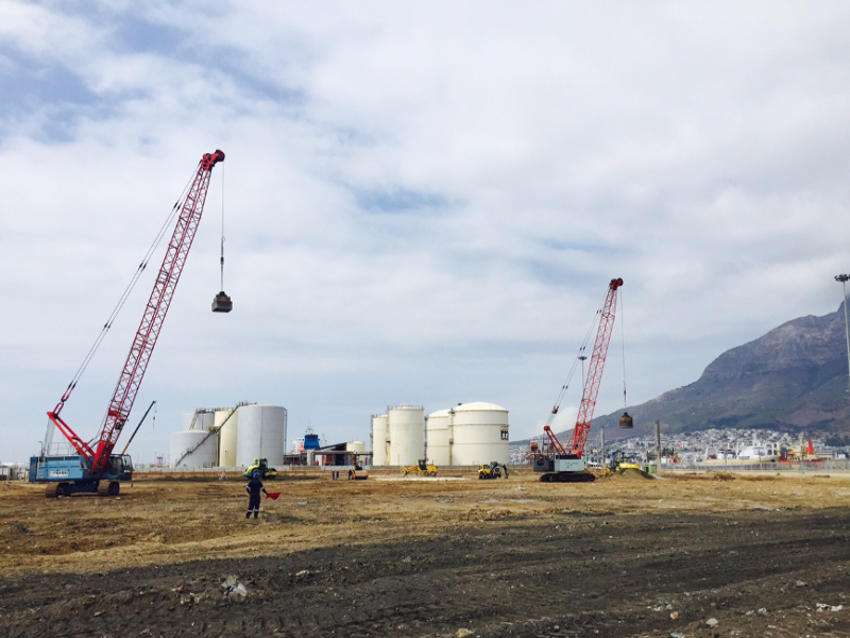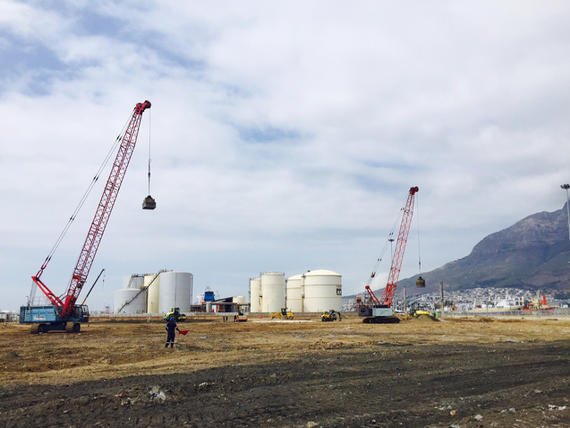The design and construction of foundations for Cape Town's first independent oil storage and distribution terminal, Burgan Cape Terminal, in the Eastern Mole of the Port of Cape Town.

The project
Due to a shortage of oil refinery facilities in Cape Town, long haul distances and congested loading at existing facilities, Burgan Cape Terminals proposed the construction of 10 large tanks with a 118 million litre storage capacity within the Port of Cape Town.
The project involved the design and construction of foundations for large fuel storage facility comprising 13 No. tanks in the Port of Cape Town.
Some 15100m² of dynamic compaction treatment was undertaken of reclaimed land fill on the Eastern Mole for 6 x 26m diameter x 19m high diesel and ULP tanks; 4 x 31m diameter x 19m high diesel tanks; 2 x 12m diameter x 18m high ethanol tanks and a 15m diameter x 17m high fire water tank.
The challenge
A big challenge was the nearby existing tanks with unknown foundations.
Dynamic compaction involves ground compaction by falling weight, thereby generating ground vibrations which if uncontrolled may result in structural damage to neighbouring structures. The challenge on this project was to achieve the required ground compaction without excessive vibrations which may lead to excessive settlement to existing operational tanks located as close as 30m from the area which is being compacted.
Due to the presence of rubble in the made up ground standard cone penetration test (CPT) testing was not possible so the continuous surface wave (CSW) technique was used together with plate load and rotary coring with SPTs.
The solution
We employed the services of GETEC a Keller company specializing in vibration and movement/settlement monitoring and recording. A system was installed on existing tanks which allowed for remote monitoring and reporting. This together with a 3m deep isolation trench allowed operations to proceed without incident.
This ground improvement solution compacted the in-situ material to a depth of 10m with a grid spacing of 6m for primary and secondary phases.
The dynamic compaction treatment utilized a penetration pounder mass of 15.5t dropped from a 20m height, followed by ironing on a 30% overlap with a 12.6t pounder dropped from a 20m height.
